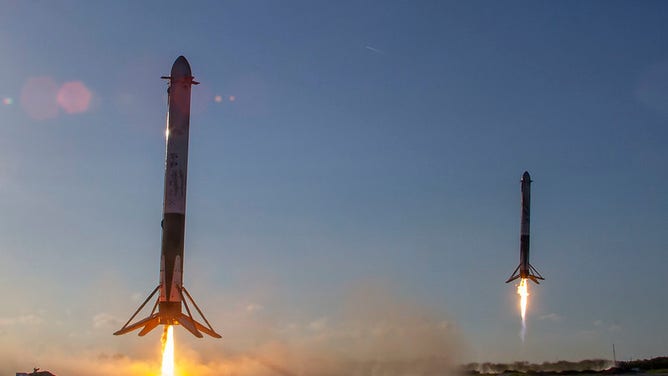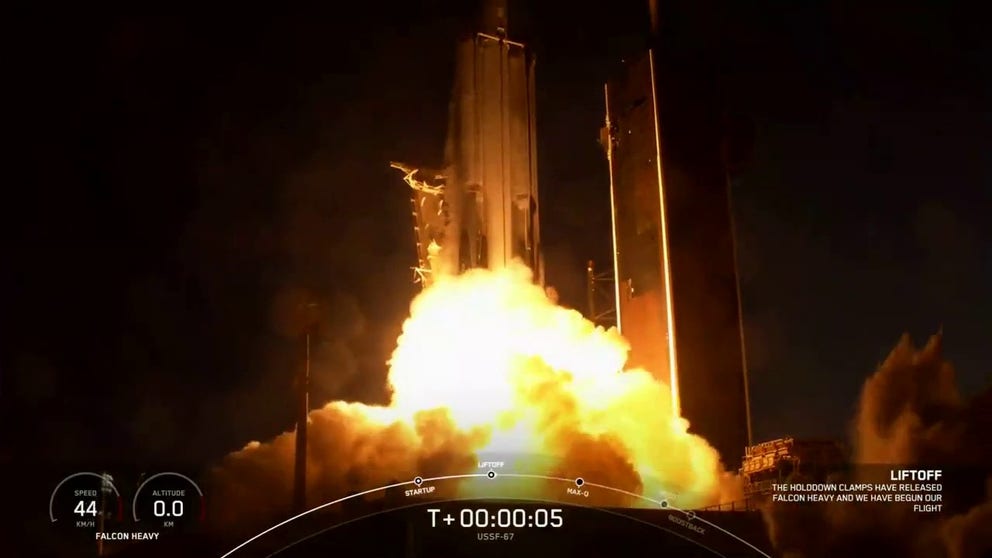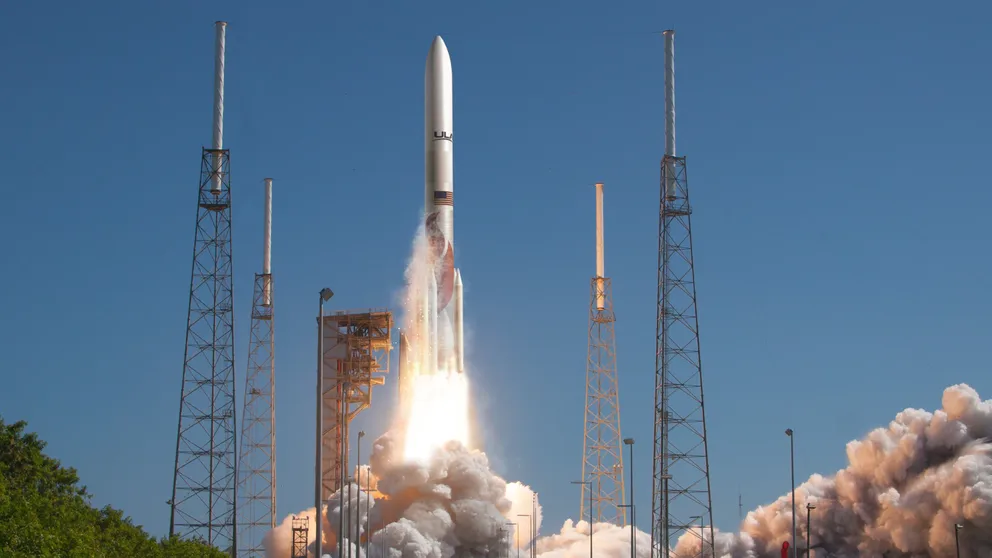'Go Falcon Heavy, go Space Force': SpaceX launched Falcon Heavy Sunday
Sunday, SpaceX launched spacecraft part of the USSF-67 mission, including a Space Force Continuous Broadcast Augmenting SATCOM satellite, after scrubbing Saturday's launch.
'Go Falcon Heavy, Go Space Force"
SpaceX and the U.S. Space Force counted down the launch of the Falcon Heavy on Sunday, a day after the planned launch.
After scrubbing the launch of the SpaceX Falcon Heavy with the USSF-67 mission for the U.S. Space Force on Saturday due to weather, the team successfully launched the spacecraft on Sunday. This USSF-67 mission included a Space Force Continuous Broadcast Augmenting SATCOM satellite.
5 things to know about the SpaceX Falcon Heavy rocket
As the world's most powerful rocket in operation, the SpaceX Falcon Heavy has 27 merlin engines and three rocket boosters.
Minutes later, video confirmed that the side boosters separated. Two of the boosters landed less than 10 minutes later. The third did not make the return trip.
The Long Duration Propulsive ESPA 3A was also onboard this launch and hosts several experimental payloads as part of a rideshare mission.
Before NASA's maiden launch of the Space Launch System rocket in November, the Falcon Heavy was the most powerful rocket in the world.
With its triple rocket boosters, a Falcon Heavy launch is a unique experience to see in person.
Falcon Heavy has 27 Merlin engines and three first-stage boosters compared to the Falcon 9, with one first-stage booster and nine Merlin engines. The Falcon Heavy produces more than 5 million pounds of thrust at liftoff to get off the planet.

A SpaceX Falcon Heavy rocket launches the USSF-44 payload from Kennedy Space Center, Fla. on Nov. 1, 2022. The launch marked the first Falcon Heavy mission in three years. (Image: SpaceX)
SpaceX lands its rocket boosters on land and at sea to reuse the hardware, driving down the cost of launches by millions of dollars.
With three boosters, the Falcon Heavy's first stages perform a choreographed aerial ballet in the sky to return to Earth. One booster can land on a drone ship at sea, and two boosters head back to Cape Canaveral to land at Landing Zone 1 in near-perfect unison.

Two Falcon Heavy rocket boosters returning to land at Cape Canaveral Landing Zone 1 after launching the Arabsat-6A satellite from Kennedy Space Center in Florida on April 11, 2019. (Image credit: SpaceX)
As the rocket boosters return to land, the sound reverberates across the Florida coast, causing sonic booms.
No rest for rocket launches
A preview of the best space exploration moments to watch for in 2023
Here are the top space exploration milestones you can look forward to in 2023, including new rockets, moon missions, astronaut launches and many more planetary and Earth science objectives.
This year will be even busier for SpaceX and the space industry as a whole.
On Monday night, SpaceX launched a Falcon 9 rocket at 11:50 p.m. ET with the OneWeb Launch 16 mission from Space Launch Complex 40 at Cape Canaveral Space Force Station in Florida.
Florida's weather was excellent for Monday's night launch. Launch weather officers with the 45th Weather Squadron had forecast a less than 10% chance weather would cause a scrub.
After liftoff, the first stage Falcon 9 booster landed at Cape Canaveral Space Force Station, making the second launch and landing for the rocket.
Those on Florida's Space Coast could likely hear and feel the Falcon 9 booster when it broke the sound barrier on reentry. The sonic booms from the rocket landings have been known to travel as far inland as the Orlando area.
Satellite operator OneWeb plans to deliver global high-speed internet in 2023 with a constellation of satellites similar to SpaceX's Starlink service.
On Thursday, January 19, the company will try to launch another Falcon 9 with 51 Starlink satellites from Vandenberg Space Force Base in California. The original launch date was earlier in the week but had to be pushed due to the state getting slammed by a parade of atmospheric rivers.
When it happens, the Falcon 9’s first stage booster will return to Earth and land on the droneship called "Of Course I Still Love You" stationed in the Pacific Ocean.
This Starlink launch will add to the growing constellation of thousands of SpaceX satellites providing space-based internet worldwide.
Last week, Elon Musk's space company kicked off 2023 with a ride-sharing Falcon 9 rocket launch sending up more than 100 small satellites into low-Earth orbit.
SpaceX achieved 61 launches in 2022, sending up a rocket nearly every week of the year. The company closed out December with seven additional launches.
According to SpaceX, after 2022, the Falcon 9 holds the world record for most launches of a single vehicle type in a single year.
Musk tweeted this week SpaceX is getting closer to the orbital flight test of its Starship spaceship and Super Heavy booster. The massive spacecraft has been under development and testing in Texas where SpaceX plans to launch Starship into orbit for the first time this year.


